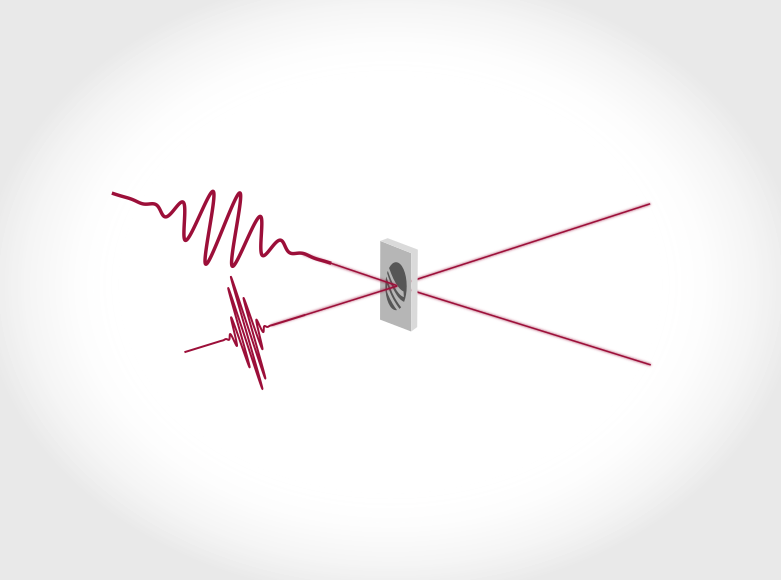Pump-probe science / ultrafast experiments

Pump-probe experiments constitute a well established tool to explore excited states of matter and their underlying physical processes [1,2]. In this scheme, an ultrashort, intensive (“pump”) laser pulse excites the system while another, possibly broadband (“probe”) laser pulse tests the optical response. Temporal resolution is achieved by delaying the probe pulse with respect to the pump pulse (or vice versa), which is fundamentally restricted to the pulse duration. Fundamental electronic processes in excited systems appear on the femtosecond time scale [3]. Thus, laser systems with sub-picosecond laser pulses are desirable while reliability and customizability to conduct various types of experiments should be maintained.
Standard pump-probe approaches measure the change of reflectance or transmittance of the system upon interaction with the pump laser pulse [1,2,4]. Similarly, the pump-probe scheme can be combined with microscopy techniques [5]. One of the most insightful variations of the pump-probe scheme is the combination with photo-electron spectroscopy. Thereby, mapping the occupation of electronic states in large regions of the Brillouin zone becomes possible [6,7]. In order to understand the complete optical response of the system – which is wavelength-dependent and complex-valued – polarization-resolved reflection or transmission measurements are preferable. This is called spectroscopic ellipsometry [8,9].
AFS offers several high-power femtosecond lasers up to entire pump-probe femtosecond beamlines that can drive a huge variety of possible pump-probe experiments.
View in AR-App

- REFERENCES
- CONTACT
[1] J. Shah, "Ultrafast Spectroscopy of Semiconductors and Semiconductor Nanostructures", Springer Berlin Heidelberg (1999).
[2] A. Othonos, "Probing ultrafast carrier and phonon dynamics in semiconductors", J. Appl. Phys. 83 (4) 1789–1830 (1998).
[3] S. Sundaram, E. Mazur, "Inducing and probing non-thermal transitions in semiconductors using femtosecond laser pulses", Nature Mater. 1 217–224 (2002).
[4] M. Fushitani, "Applications of pump-probe spectroscopy", Annu. Rep. Prog. Chem., Sect. C: Phys. Chem. 104 272-297 (2008).
[5] M. Fischer et al. "Invited Review Article: Pump-probe microscopy", Review of Scientific Instruments 87 031101 (2016).
[6] S. Mor et al., "Ultrafast Electronic Band Gap Control in an Excitonic Insulator", Phys. Rev. Lett. 119, 086401 (2017).
[7] M. Puppin et al., "Time- and angle-resolved photoemission spectroscopy of solids in the extreme ultraviolet at 500 kHz repetition rate", Rev. Sci. Instrum. 90, 023104 (2019).
[8] S. Richter et al., "Broadband femtosecond spectroscopic ellipsometry", Rev. Sci. Instrum. 92 033104 (2021).
[9] S. Richter et al., "Ultrafast dynamics of hot charge carriers in an oxide semiconductor probed by femtosecond spectroscopic ellipsometry", New J. Phys. 22 083066 (2020).

